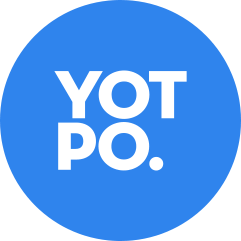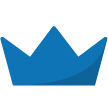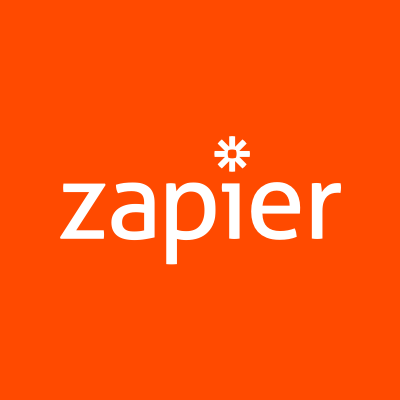How I've Sold Over 100K Wallets On Kickstarter
Hello! Who are you and what business did you start?
I’m Elad Burko, the founder and CEO of Paperwallet.
I created the company back in 2007 out of a love for art and innovative product design. We create artist-designed minimalistic wallets and other accessories for men and women out of Tyvek, a smart material made in part from materials.
Before launching the company, I realized how difficult it is for most artists to make a living just on their art. So I created Paperwallet, to give them the ability to do just that. Each of our wallets features a limited-edition design by different international artists. In addition to creating cool wallets, we’re also giving artists a platform to earn a living doing what they love, and get there designs the attention they deserve.
In terms of product design, my mission when starting Paperwallet was to create something unique that would fuse design and functionality. Essentially, I wanted to make an alternative to the boring and dated black/brown leather wallets-- without sacrificing convenience.
The Slim Wallet was our first prototype and still our most popular product. Minimalistic yet functional, they were inspired by the art of origami. The Slim Wallet’s thin material expands to allow 12-16 credit cards comfortably, as well as plenty of cash-- all without looking bulky. Our first Kickstarter campaign, in which we introduced a new collection of the Slim Wallet exceeded our fundraising goal by 600%.
That was in 2014, today we’ve launched 9 additional product lines, three highly-successful crowdfunding campaigns, and an ecommerce shop. Since that initial campaign, we’ve sold over a hundred thousand wallets and other accessories to date

What's your backstory and how did you come up with the idea?
From the beginning, I was always really fascinated by how things work. Even as a really young kid, I could distinguish the make and model of any car, just by glancing at the shape and size. So it’s always been the little details in design that caught my eye.
As the least artistically gifted person in a very creative family, I always kind of new my future would be in entrepreneurship. I just needed a great idea. That came in 2007, during my final semester of college. A friend of mine had taken a trip to Italy and brought back a wallet that was made of paper, laminated with vinyl, then cut and sewn to make a wallet.
It certainly wasn’t the most practical wallet I had ever been given, but I loved the concept. I wanted to make something similar out of a different material that would break from the traditional leather wallet, but be equally as functional.
Take us through the process of designing, prototyping, and manufacturing your first product.
Once I had the idea, I needed the perfect canvas. It had to be super strong, durable, lightweight, water-resistance, eco-friendly, and customizable. I tested every kind of paper for months.
Then I realized the answer had been there all along. The envelope the samples came in was made out of this incredibly durable, thin material called Tyvek. It passed all of the stress tests, so from there we created a prototype.
Our first production run was a few thousand units in 5 different colors. Once we had those we hit the streets. We went to markets, attended art and design fairs. Anywhere we could get a booth in front of end users for a good price, or no price at all. We had to be really lean but knew we just needed to get the product in front of buyers.
Describe the process of launching the business.
After attending ad hoc events and trying to sell directly, we wanted to get our products into stores in order to sell in higher quantities. We didn’t have a store of our own yet, so we thought wholesale would be our best bet. We went to Paris where the father of a friend owned a shop. He offered to help us sell to retailers.
Once we had enough cash flow, we opened our online store. It hadn’t taken off particularly well, as digital marketing isn’t quite the same as selling directly to physical customers or stores.
Finally, about three years ago we created our first Kickstarter campaign for one of our new collections, as a way to launch it and test how the community would respond to the Paperwallet brand. We didn’t have a really strong understanding of the platform and didn’t do any promotion of the campaign. But, we still exceeded our goal and connected with about 3,600 backers by the end of the campaign.
Since then we’ve launched 2 more products on Kickstarter, each with a lot of success. Our most recent campaign for the Micro Wallet had a goal of $15,000. By the end of the campaign, we had raised $344,733 on Kickstarter and continued on to Indiegogo InDemand where currently stand at well over $600,000 in sales.
Since launch, what has worked to attract and retain customers?
In terms of marketing, we’ve really tried it all. From the early days of selling directly to customers at markets and fairs, to selling B2B at tradeshows, and to the online world of crowdfunding campaigns, Google Ads, SEO, and social media today.
As far as social media we mostly use Facebook and Instagram - both organic and paid ads. Social paid ads have been an amazing tool for us. We use it for product launches, retargeting, abandoned shopping cart and just everyday ads.
We’re also big on email marketing. We love our newsletter subscribers and consider them our VIP customers are always the first to know and we give them the best deals, offers, and best value. Sometimes we have limited edition products and designs that we only release to our newsletter subscribers because after one newsletter it’s sold out.
I don't believe in PR but maybe it's because we've never had any luck with it. You can pay tons of money and get no traction. The best press we ever got was free and it was when the journalists, bloggers, publications found us organically and wrote about us. I'm sure that if we had a huge coca cola size budget for PR then it can work - but for a small or even medium-sized business, it's too much of a risk with the high prices PR companies take.
Another thing that really works for us is networking. The secret is 'don't be shy' go out there and meet people - you never know when you'll meet someone who can help you to the next stage of whatever it is you're doing.
When starting out keep an open ear to your customers - listen to them and what they like and dislike about your products and keep fine-tuning, adjusting, and creating until you have a product that they love and keep coming back for more.You have to keep tweaking the products until you have come to as close as possible to perfect product-market fit.
How are you doing today and what does the future look like?
As I mentioned above, the first few years of the business we sold via tradeshows with a focus on B2B for wholesale and distributors. In the past 5 years, the focus has been online but we continue to grow our B2B partnerships. This year we also plan to launch a new product we’ve been working on via Kickstarter and focus our energies on building our brand on Amazon.
We do everything from A to Z. We develop and design the product, collaborate with Artists to source designs, produce in our factories in China and Brazil. And sell B2B and B2C worldwide.
To reach new audiences, we're always listening to customers needs and thinking up new products. We launch new products and collections on crowdfunding platforms like Kickstarter and Indiegogo. We are continuously seeking strategic partners and distributors who can help us penetrate new regions globally.
Our short term goal is the launch of a new product. It’s planned to launch on Kickstarter in April 2019 and to grow our brand visibility and sales on Amazon in 2019.
Through starting the business, have you learned anything particularly helpful or advantageous?
In many years of business, I’ve learned that the perfect product-market fit does not exist. It’s an on-going target that you arrive at over the years, rather than something you perfect before launch.
You can always improve your product and the story you tell around it to achieve a better fit. For us, we had an idea and molded the product to fit a market by listening to customers. Take your product to the customer, try to sell it to them. Understand what’s important to them, what’s not important to them. And then adapt your product around that feedback. If there are features in your product that the customer doesn’t care about, get rid of it.
Ask your customer questions, see what they say. Create surveys or pick up the phone and call them. Have a conversation and you’ll learn a lot about what’s wrong with your product. Maybe there’s nothing wrong with it, but you’re not marketing it right.
Slowly by asking enough questions, and adapting your product when necessary, you will slowly mold your product to find the perfect product-market fit.
What platform/tools do you use for your business?
We use a number of tools to run the business. The most important is likely our e-commerce platform, Shopify. Shopify made it easy to create a unique theme that perfectly matches our brand image.
Shopify is also great as there are a number of useful plugins. Some of my favorite are Zappier (for quick and easy connection between apps), Yotpo (for customer reviews), and Sumo (lead generation and conversions).
What have been the most influential books, podcasts, or other resources?
The Power of Positive Thinking by Norman Vincent Peale is a really quick read that can absolutely change your mindset and help you live a more positive life. I think positivity and optimism are two really important traits for an entrepreneur to have. Being a business owner is trying and maintaining a positive outlook will help you preserve through the tough times.
Advice for other entrepreneurs who want to get started or are just starting out?
Get user validation early and often. Intuition is important, but ultimately it’s others who are going to buy your product/service. Ask friends what they think of your idea, and really listen to their answer.
Host a focus group with friends and acquaintances; ask how much they would be willing to pay for your product. It’s really important to know what others think and adapt accordingly.
Are you looking to hire for certain positions right now?
We’re not looking to hire for any positions in-house currently. However, we're always looking to collaborate with new artists.
Where can we go to learn more?
- https://paperwallet.com/
- http://instagram.com/paperwallet
- https://www.facebook.com/paperwalletofficial
- https://www.pinterest.com/paperwallet/
If you have any questions or comments, drop a comment below!

Download the report and join our email newsletter packed with business ideas and money-making opportunities, backed by real-life case studies.

Download the report and join our email newsletter packed with business ideas and money-making opportunities, backed by real-life case studies.

Download the report and join our email newsletter packed with business ideas and money-making opportunities, backed by real-life case studies.

Download the report and join our email newsletter packed with business ideas and money-making opportunities, backed by real-life case studies.

Download the report and join our email newsletter packed with business ideas and money-making opportunities, backed by real-life case studies.

Download the report and join our email newsletter packed with business ideas and money-making opportunities, backed by real-life case studies.

Download the report and join our email newsletter packed with business ideas and money-making opportunities, backed by real-life case studies.

Download the report and join our email newsletter packed with business ideas and money-making opportunities, backed by real-life case studies.










